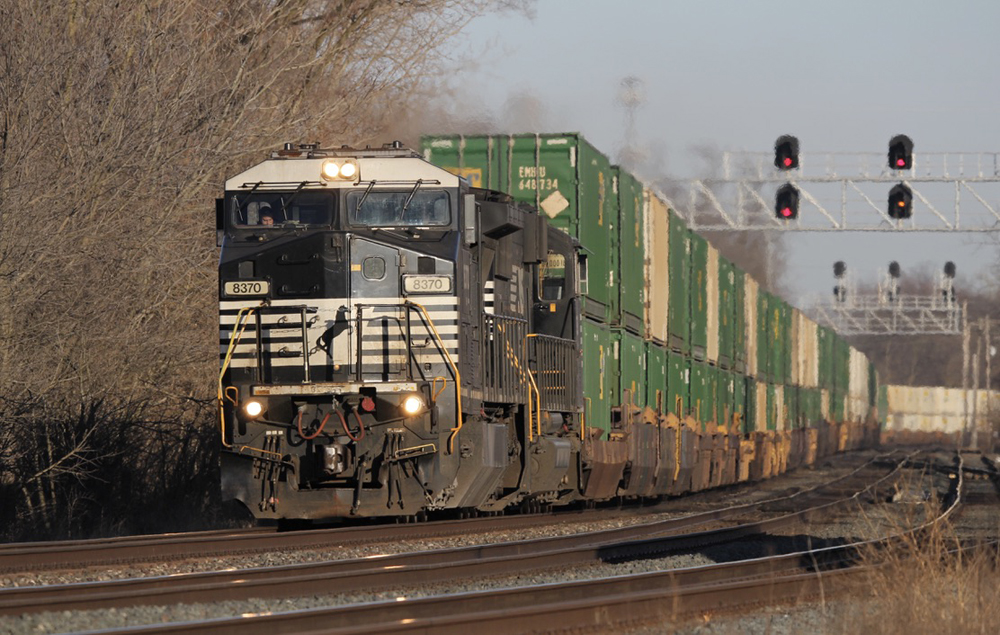
CHARLESTON, W.Va. – Russia’s self-inflicted economic recession resulting from the Ukraine war will likely undo more than a decade’s worth of economic progress, as other countries end dealings with the Russians. For the U.S., this is an opportunity to increase exports, bolstering its relevance as a swing supplier. Coal and grains in particular are commodities that drive the economies of Russia and Ukraine, and that in the U.S. have close ties to railroads.
Sanctions against Russia have tactically omitted fossil fuels due to European dependence on Russian energy, but Europe is considering how it can wean itself from Russia suppliers. The European Union is proposing a ban on coal imports from Russia that could take effect by August. CNBC reports E.U. member Germany purchased more than 20% of its coal from Russia in 2020, and has expressed concerns about the economic impact of an accelerated phase-out of Russian coal.
U.S. may be substitute source of coal
These vulnerabilities may prompt European buyers to turn to U.S. suppliers, leveraging already relationships with American coal companies. The U.S. exported more than 22 million tons to Europe in 2021. The Netherlands was a major recipient, receiving 7.1 million tons, with Germany, Austria, and Italy receiving in excess of 1 million tons. While American coal supply remains tight due to strong global demand, this could create spot-market opportunities for miners with the capacity to increase output. At the least, Europe-bound coal tonnage may offset declines in U.S. coal exports to Ukraine as a result of the conflict.
For example, Metinvest, a Ukrainian steelmaker, uses metallurgical coal from Appalachia to produce steel. CSX Transportation and Norfolk Southern transport the coal from the steelmaker’s U.S. subsidiaries to seaborne terminals for export. The steelmaker’s plant in Mariupol has become a focal point in Ukrainian resistance in the coastal city, with Russia stepping up attacks in an attempt to capture troops and civilians barricaded in the facility. A plant in Avdiivka has also reportedly sustained damage. Metinvest says until the Russian military aggression ends and communication with its plants is re-established, it is not possible to assess impacts, but steelmaking — and therefore coal demand — is likely to be disrupted for some time.
Biggest opportunity: America’s most economical coal originates from the Powder River Basin, but the ability to provide tons not already accounted for would be contingent upon a mine’s ability to increase production and the line-haul railroad’s capacity for extra business. Both industries are struggling to meet labor demands in a post-pandemic economy. The ability to produce more, price competitively, and navigate challenging logistics with finesse will determine the ability to meet the new demand.
Global wheat supply also threatened
Ukraine’s ability to export grain, especially wheat and rye, is also threatened. A recent Forbes article, citing Uranian agriculture officials, notes that Ukrainian grain shipments have decreased from 4 to 5 million tons per month to only a few hundred thousand. According to United Nations data, the Ukraine is the world’s sixth-largest exporter of wheat, responsible for 10% of the market and transporting 20 million tons in 2021. The country also exports rye, barley, and sunflower seeds.
United Nations officials warn farmers are not able to attend to their fields and harvest crops. Latest indicators suggest 20% to 30% of areas sown will remain unharvested during the 2022-2023 season. Damage to transportation infrastructure such as rail lines and ports will further adversely affect farmers’ ability to market crops, while insurance costs for vessels destined to berth in the Black Sea region will drive prices higher.
Egypt, Ethiopia, Yemen, Lebanon, and Palestine are key importers of wheat from Ukraine and Russia. A disruption in supply may create food shortages, prompting these countries and other buyers to seek alternative sources, such as the U.S.
The U.S. sends the majority of its wheat to Mexico, China, and the Philippines, according to U.S. government data. Farmers may look at increasing supply to other markets if food shortages dictate. Globally, the U.S. is the world’s fourth largest wheat producer, harvesting just under 50 million tons in 2020, followed by Canada at 35 million tons.
If the conflict continues and the U.S. has a favorable harvest, railroads may capture spot-market opportunities to transport grains for export from terminals in the Gulf and elsewhere.
Biggest opportunity: Wheat and other grains are exported across the country, but those with the great potential to accommodate extra capacity include New Orleans, accounting for 37% of total agriculture trade, and the Port of New York and New Jersey. The remaining top five agriculture trade centers are on the Pacific Coast, situated primarily for Asia-based markets. Spot-market opportunities would take coordination between farmers and the railroads in getting grains to market.
Even if Russia and Ukraine negotiate a peace deal, it is unlikely that a lifting of sanctions would immediately rekindle relationships with Russia. The Institute of International Finance says the current crisis has wiped out more than 15 years of economic development, suggesting that Russia’s gross domestic product will shrink 15% this year and another 3% in 2023. Goldman Sachs predicts a 10% contraction in GDP in 2022. The World Bank estimates Ukraine’s economy will shrink by a staggering 45% in 2022, with the full magnitude depending on the duration and intensity of the war.














I learned in Command and General Staff College, that all wars are fought for economic reasons, but need a social “cause” to act as a cover for averice and flagrant greed. Our industries would do well to consider this as well. Blessings
It was the inability to handle business with the US entry into World War One that prompted our government, on Dec 26, 1917, to put the railroads under federal control. Given our present Administration, are we about to see history repeat itself?
The same thing happened in the 1860s. When rail management focus is on maximizing profits, as they are now, and traffic is snarled, as it is now, and the national interest is focused on getting their stuff moved, regulation or nationalization won’t be far behind.
I can see a Class 1 (name withheld) stencilling its locomotives, “We can’t handle it” or more accurately “We won’t handle it.”
What, additional business? You have to be kidding; they can’t do a credible job of handling the business they have now, and are doing everything possible to shrink it even further.
Oh my god, the OR!!!!!